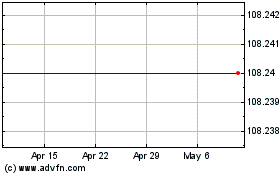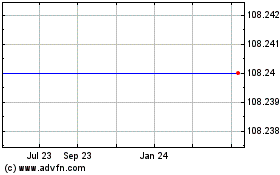By Theo Francis
As U.S. companies disclose what they pay typical workers, one
thing is clear: A lot can change in a year.
Jefferies Financial Group Inc. almost tripled what it paid its
median employee last year. Median pay rose by nearly 60% at Macy's
Inc. and by almost a quarter at biotech Celgene Corp. It fell by
two-thirds at Coca-Cola Co. and by more than a quarter at
snack-maker Mondelez International Inc.
The reasons for these big swings from 2017 to 2018 varied
widely, however. Some reflected dramatic shifts in the company's
workforce. Others came about thanks to new ways of identifying that
middle employee. Still others reflect actual changes in what
individual workers made.
"It's strange to see any that have changes of 25% or more," said
Eric Hosken, a partner at Compensation Advisory Partners. "You
wouldn't expect to have pay structures that change that much."
U.S. publicly traded companies were first required to disclose
the total pay of their median employees last year, and most are
reporting the figure for the second time with their annual proxy
statements this spring. (Use this WSJ tool to search pay data for
more than 1,000 companies.)
Overall, median pay rose at most of the 282 companies in the
S&P 500 that had reported two years of median employee pay
through midday April 9, a Wall Street Journal analysis of data from
MyLogIQ found. Twice as many companies increased their median-pay
figure as lowered it, the Journal found, with 45 companies
reporting gains of at least 10% and 33 reporting declines at least
that large.
Health insurer Humana Inc. said its figure rose to $70,500 from
$57,385 after the company raised its minimum hourly wage for
continental U.S. workers to $15 an hour and enrolled more than half
of its 41,600 employees in an annual incentive program. A
spokesperson at Humana couldn't be reached for comment.
Median pay at Jefferies Financial jumped to $150,000 last year
from $44,584 in 2017 after the holding company sold most of its
stake in its National Beef meat-processing unit in June 2018,
cutting its workforce to about 4,600 from 12,600. The 2017 median
employee at the company, formerly called Leucadia National, was an
hourly line worker at National Beef, while last year's was a senior
research associate in the company's Jefferies LLC
financial-services operation. A Jefferies spokesman declined to
comment beyond the company's securities disclosures.
Coca-Cola slashed its median pay figure by two-thirds after it
finished shifting North American bottling operations to franchisees
and acquired a controlling interest in African operations. The 2017
median worker was an hourly full-timer in the U.S. making $47,312,
while last year's made $16,440 as an hourly full-timer in South
Africa.
In its proxy statement, Coca-Cola said it intends to shed the
African operation again after making improvements and offered an
alternative median employee excluding that unit: an hourly
full-timer in the U.S. making $35,878, about 25% less than his or
her 2017 counterpart. A company spokesman declined to comment
further.
Other shifts in median pay stem from changes in how companies
identified median employees. Firms must exclude contractors and
include part-time, temporary and seasonal workers but have the
option to annualize pay for some midyear hires. They also may use
statistical sampling to pick a median employee from within a group
clustered around the median.
Macy's reported median pay of $21,885 last year, up 59% from the
$13,810 it reported in 2017. But the department-store chain altered
how it determined the median employee, including by annualizing pay
for part-year workers but not seasonal employees. A Macy's
spokeswoman said its methodology changes were driven by a new
human-resources system adopted in early 2018, and that the company
concluded annualizing new hires' pay better reflected its
workforce.
Median pay shifted substantially at some companies after they
excluded different foreign populations from the calculation.
Companies may exclude some foreign workers, but only by omitting
entire countries totaling no more than 5% of their global
workforces.
That may have helped Leggett & Platt Inc. double its median
pay figure to about $32,200 last year from about $16,400 in 2017.
The first year, the conglomerate -- which makes bedsprings,
hydraulic cylinders and other products -- excluded workers in
France, the U.K. and India. Last year, it counted French and U.K.
workers while excluding India and such lower-wage countries as
Brazil, Hungary and South Africa.
Leggett & Platt also annualized the pay of part-year
employees and included the value of employee health benefits, a
spokeswoman said. "We believe these changes reflect developing
disclosure practices and provide accurate and transparent
disclosure that is more comparable to others in the market," she
said.
Pay consultants said companies run the risk of drawing unwanted
scrutiny for poorly explained methodology changes.
"A company should not be doing anything that looks like
shenanigans," said Dayna Harris, a partner at executive
compensation consulting firm Farient Advisors. "You really should
have a darn good reason that explains it, so it doesn't look like
you're changing it just to get a better pay ratio."
Companies may use the same median employee for up to three
years, but only about a third did so in 2018 -- fewer than many
expected, according to a separate analysis of 201 companies of
various sizes by Compensation Advisory Partners.
Some companies had big swings despite using the same employee in
both years. Celgene, the biotech company, reported median pay for
the same employee rose 24% to just over $263,000 from about
$213,000. A spokesperson at Celgene couldn't be reached for
comment.
Mondelez International, which makes Oreo cookies and Trident
gum, reported median pay for the same employee fell 29% to $30,639
in 2018. The snack company said rising interest rates meant smaller
gains from this part-time hourly worker's pension benefit. The
company declined to comment beyond its securities filings.
Using the same employee tended to yield bigger increases, the
CAP study found. Individuals rising through the ranks are likely to
get raises, even if the overall workforce doesn't change, with new,
lower-paid workers replacing departing, higher-paid retirees.
Write to Theo Francis at theo.francis@wsj.com
(END) Dow Jones Newswires
April 10, 2019 07:14 ET (11:14 GMT)
Copyright (c) 2019 Dow Jones & Company, Inc.
Celgene (NASDAQ:CELG)
Historical Stock Chart
From Mar 2024 to Apr 2024

Celgene (NASDAQ:CELG)
Historical Stock Chart
From Apr 2023 to Apr 2024
